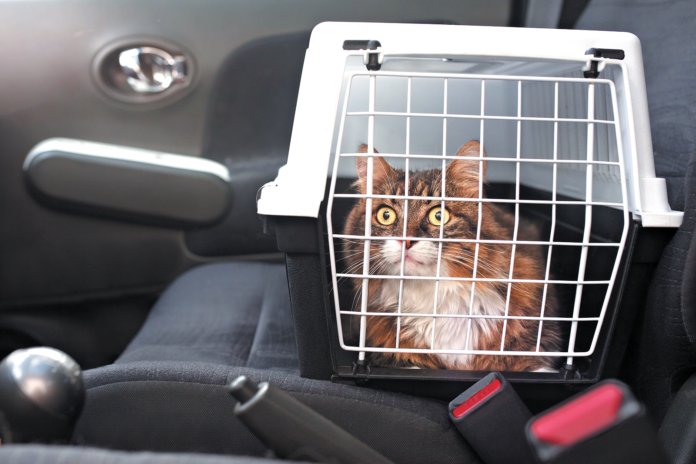House cats rarely ride in the car — usually just for veterinary visits. But when they do, as many as half suffer from some degree of motion sickness. No doubt nauseated, they vomit and, in some cases, even urinate and have diarrhea. Other signs include excessive drooling and a type of loud, tormented hyper vocalization called caterwauling.
A disturbance of a cat’s vestibular system may sometimes be responsible for the car sickness. That system is an array of nerves and other parts of the inner ear that connect to the brain stem and control balance, in addition to coordinating the movements of the head and eyes. For certain cats the vestibular system just can’t cope well with the movement.
But more often, motion sickness is brought on by sheer fear. All of a sudden the cat finds herself moving in a dark, unfamiliar environment, and she may realize she’s going to the clinic. The combination can put her over the top.
How to tamp down on symptoms
You might think it doesn’t pay to do anything about a cat’s motion sickness because it won’t occur very often. But why not protect your cat from feeling awful if you can — and make veterinary visits less traumatizing in the process?
It’s all about behavioral training that starts with getting your pet used to the cat carrier. We’ve said it before, but the carrier should not come out only right before the dreaded doctor’s visit. It should be something that’s left around all the time. Think of it as an extra hidey hole. Keep a soft blanket in there and a nice mini-bar — a few savory treats to make her “visits” to the carrier more enjoyable.
Once your cat becomes comfortable with the carrier, which could take a few weeks if she’s no longer a kitten, close the door for a few minutes here and there. That way, she’ll learn that being confined for short periods is normal and nothing to be concerned about.
Once she acclimates to being confined, carry her in the carrier out to the car, place her in the back, and sit behind the steering wheel. Continue to make sure there are good-tasting treats to distract her and a couple of her favorite toys, too.
Try this every other day for about a week — no more than 5 minutes at a time — then every single day for a few days. When your cat seems fully comfortable, go out to the car for 2 or 3 more days with her but now run the motor. Then start driving — just around the block. Your cat may never come to love going someplace in the car, but she might stop getting severe symptoms every time she does.
If the behavioral strategy fails
Some cats will experience motion sickness no matter how conscientiously you try to adjust them to car rides. In such cases, a medical approach might be in order.
The veterinarian can prescribe Cerenia, Zofran, or a number of other drugs to help prevent nausea. Buspar may help, too. It’s meant to take care of anxiety but could also help with nausea.
If even with drugs your cat can’t go for a car ride without suffering, consider finding a veterinarian who makes house calls. A vet who comes to the house can’t do everything that is done in the doctor’s office. But for routine wellness exams and uncomplicated illnesses, a lot can be accomplished in your living room.
To make your cat’s car rides more enjoyable and thereby cut down on the chance of motion sickness, or at least its intensity, try the following.
➤ Keep the car on the cool side. Feeling overheated can add to a sense of nausea.
➤ Play classical music — softly. Cats respond to music, and soft, lulling melodies might really help.
➤ Adding calming pheromones to your cat’s carrier. Feliway is a reliable brand.
➤ Speak softly and never show any anger or frustration about your cat throwing up or defecating or howling non-stop. This is not about what you’re going through. It’s about what she’s going through. Imagine if someone got annoyed with you or yelled at your for feeling sick.




